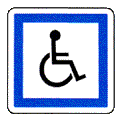 Keratos'
experience confirms that SEVERE ocular surface sufferers (OSD) are
frequently confronted to serious profressional insertion problems. These
are usually underecognised orphan pathologies, which social services
plainly ignore. Many OSD sufferers are
told to avoid air conditioner, smoke, dust, wind, volatile products,
perfumes, dry atmosphères, wind fans, allergens and pollens, computer
screens, heating equipments, pollution and so on by their doctors in
order to save their sight. And yet, social services who are seldom
confronted to this type of diseases clearly do not consider these to be
serious professional disabilities. For some of our members professional
life resembles martyrdom since the cornea is the most sensitive tissue
of the human body. How can living with constant corneal erosions and the
pain associated with it be seen as something else besides are terrible
disability? How can visual impairment and severe eye pain
sufferers be seen as individuals who likely to find work?
Keratos'
experience confirms that SEVERE ocular surface sufferers (OSD) are
frequently confronted to serious profressional insertion problems. These
are usually underecognised orphan pathologies, which social services
plainly ignore. Many OSD sufferers are
told to avoid air conditioner, smoke, dust, wind, volatile products,
perfumes, dry atmosphères, wind fans, allergens and pollens, computer
screens, heating equipments, pollution and so on by their doctors in
order to save their sight. And yet, social services who are seldom
confronted to this type of diseases clearly do not consider these to be
serious professional disabilities. For some of our members professional
life resembles martyrdom since the cornea is the most sensitive tissue
of the human body. How can living with constant corneal erosions and the
pain associated with it be seen as something else besides are terrible
disability? How can visual impairment and severe eye pain
sufferers be seen as individuals who likely to find work?
It is well known that employers love employees who are
unable to stand reading a screen for hours, cannot stand smoke,
ventilation, air conditioner! How can one expect understanding from
employers when these disease are totally unknown of the general public
and sometimes even doctors or are usually considered as just bothersome
disease. Having a corneal is not bothersome... it is excruciantly
painful!
Forcing some of the persons to work under normal
conditions because social services do not realise the impact of severe
forms of these diseases is not only an abandon but truly criminal. But
usually the problems start wll before that and notably with an job
interview unlikely to be succesful. Won't the employer notice that such
a person is putting drops every 5 minutes or so? In many cases the job
interviews of some of our members have ended just there. How can one
hide such severe environnemental and social disabilities (so easily
affected by air conditioner, heating, ventilators, and computer use)? At
best one may expect to work in an office no-one smokes in... but how
realistic is it to find a job where there is no or little computer use,
no air conditioner, no heating equipment.
Nevertheless, work would still be possible:
-
working from home or telework as Canadians say is
the most obvious solution, where one may recreate the ideal conditions
for severe ocular dryness and other specific sensivities (humidifier, a
good screen placed under the eyes, no heating, no AC, etc
-
working in a specific office place or with some specific
adaptations equipement close-by (humidifier, etc).
Otherwise, working in a normal environnement clearly
means worsening the intial condition, whihc is often the case of our
members. Usuall trying to hide this condition is short-term solution
which ends up in both professional and therapeutic failure.
Currently the lack of understanding from social services
is clearly contributing to increased disability. If not treated
seriously amny OSD will lead to blindness. We sure this example is
probably true for many unknown disabilities and diseases. Anyway, in the
end everyone loses...this way.
This is why keratos has recently
joined a group of association on chronic disease and work-related
issues.
▲

copyright ©
Keratos 2005-2007